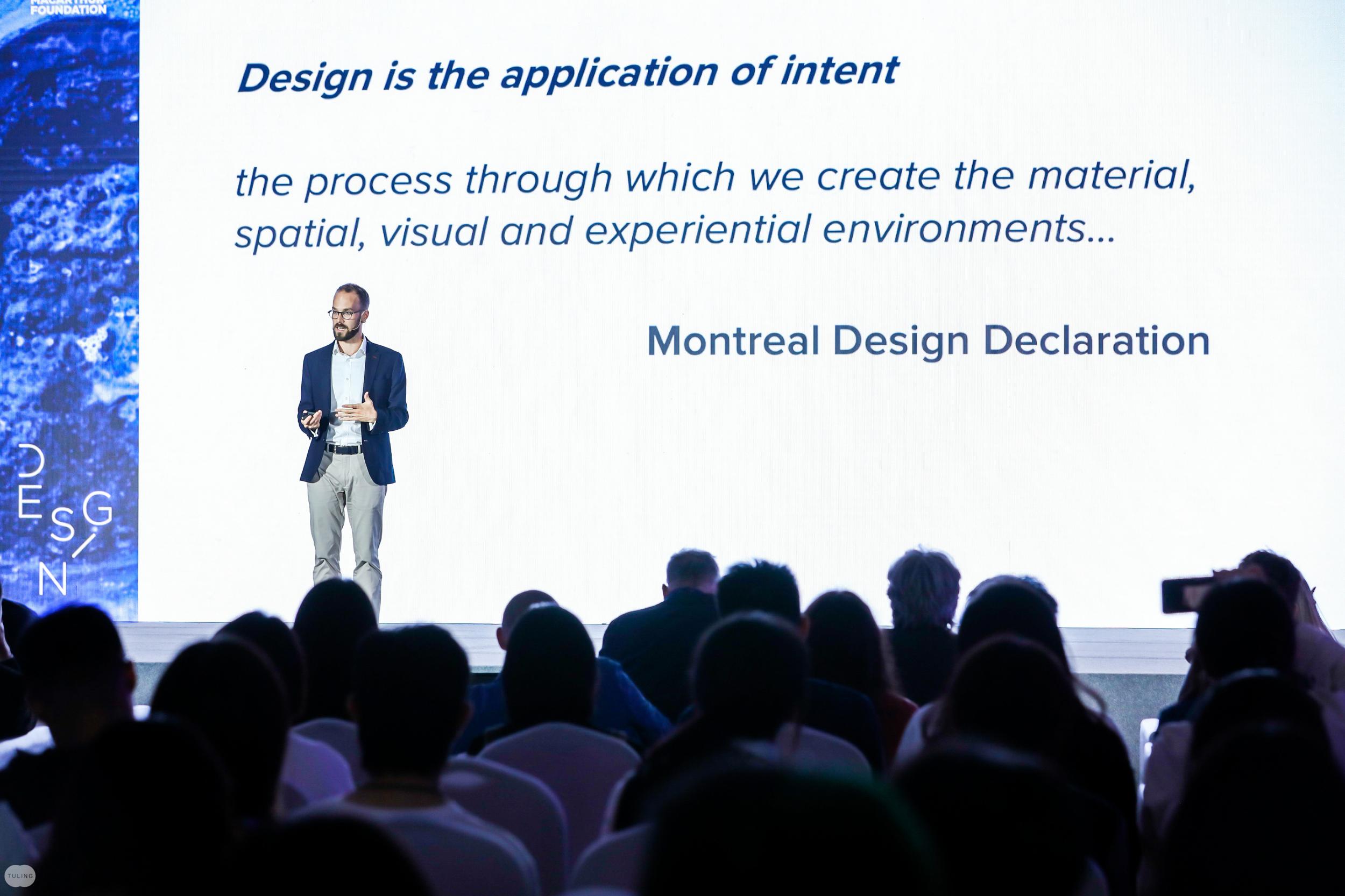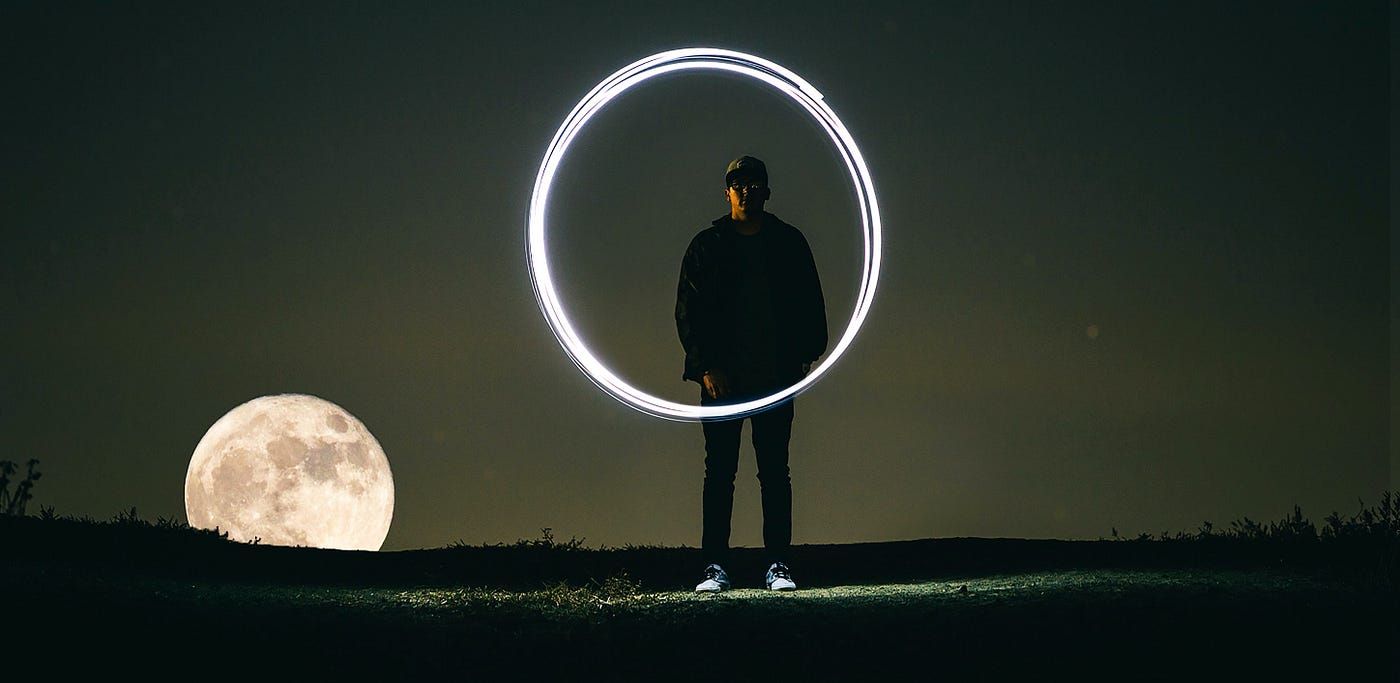Design:
Creating environments with intention
Look around you. Almost everything you see has been designed by someone. Your chair. The building you are in. Your clothes. And not just physical things but also all of the services you use and the experiences that make up day-to-day life. How you get your food. The mobility and communication systems that connect you with your loved ones.
There are many definitions of and perspectives on design. Many agree that designing is about creating with intent, addressing needs, and moving toward preferred situations.
For clarity, let’s follow the Montreal Design Declaration, which represents over 700 professional associations, design schools and stakeholders, and defines design as:
“the application of intent: the process through which we create the material, spatial, visual and experiential environments”
This isn’t just about products or aesthetics, but about orchestrating interactions, experiences, and transforming systems.1
And designing is not just for people with ‘design’ in their job title.2
For clarity, let’s follow the Montreal Design Declaration, which represents over 700 professional associations, design schools and stakeholders, and defines design as:
“the application of intent: the process through which we create the material, spatial, visual and experiential environments”
This isn’t just about products or aesthetics, but about orchestrating interactions, experiences, and transforming systems.1
And designing is not just for people with ‘design’ in their job title.2

Photo Tongji Design Week 2019
Why is it so important?
Important choices when we are designing. This includes choices on the business model, materials, aesthetics and functionality of elements, but also interactions of people and systems. For example, what is our business model: Selling more physical products or creating access, services and experiences addressing the true needs (with materials and products only being circulated to achieve that objective)? When it comes to data: How is information shared and circulated to be nutritious to all stakeholders and to enable better designs with every iteration? In the case of physical products: What is our relationship with materials? How are different particles, parts and products combined into functional units that address specific needs, and how easily they can be circulated, reused, repaired, refurbished, or disassembled? Screws or glues? These crucial choices radiate across the entire system, affecting sourcing, production, and how we use things. Importantly, they also determine ‘what happens next’ and what is possible after something has been used. Does it become waste? Or can it be part of a circular economy, where waste is designed out, and materials are destined for one valuable application after another?
It’s hard to reverse the impacts of design decisions. We can’t unscramble an omelette. Design decisions often lead to long-term investments that lock us into a certain model for years to come. The European Commission estimates that “over 80% of all product-related environmental impacts are determined during the design phase of a product”3.
What is circular design?
Circular design is the practice of applying circular principles and systems thinking in designing anything - from products, to services, to systems.
Circular design embraces systems thinking and enables nutritious flows towards a world of regeneration and thriving.
A world where we design products, services, and systems with the bigger picture in mind.
A world where we zoom in on user needs while zooming out to consider the ecosystem in which we are creating.
A world where we unlock a new frontier of creativity.
Circular design embraces systems thinking and enables nutritious flows towards a world of regeneration and thriving.
A world where we design products, services, and systems with the bigger picture in mind.
A world where we zoom in on user needs while zooming out to consider the ecosystem in which we are creating.
A world where we unlock a new frontier of creativity.
Circular design is about addressing real needs by shaping nutritious flows using circular principles and systems thinking.
Addressing real needs - and co-creating value
Nutritious flows
- Circular principles
- Eliminating waste and pollution (or more broadly ‘letting go’ of anything that is toxic and harmful to life)
- Circulating at the highest value (or more broadly ‘enabling flow’ of anything nutritious)
- Regenerating (or more broadly to ‘plant and grow’ new seeds that are conducive to life)
Circular design can come in many forms
You can find out more about the various forms of circular design, examples and theory on the open source platform SEEK. -
Business innovators design new business models that decouple economic thriving from linear material streams. Rather than generating revenue from selling more products (built on planned obsolescence), value is generated by circulating nutritious flows and creating experiences for the customers (within a regenerative ecosystem)
- Architects design regenerative and adaptive buildings: Using safe & circular materials, modularity and disassembly, enabling retrofitting and future uses through information flow about the individual components (in the spirit of ‘material banks’)
- Similarly, circular design can be applied to product design, service design, graphic design, urban planning, etc.
Why do we use the term “circular design”?
Most people would say that good design naturally leads to a circular economy. Dieter Rams’ famous 10 principles of good design, for example, state that good design is long-lasting, useful, innovative, and environmentally friendly.“If something is not designed in accordance with circular economy principles, it is not professional, responsible design — it is malpractice.” — David Grossman, President 2015–2017, International Council of Design
However, it is just not yet happening at speed and scale. Look at design awards, for example, or the celebrated design icons in the fashion and mobility sectors; what we praise as ‘good design’ is rarely working to eliminate waste and pollution, circulate products and materials at their highest value, or regenerate natural systems. Often, the opposite is true. As a result, we need engagement on this topic and a way to talk about it.
Ways to get started on the journey
What inspires me, besides the vision of a future where life can thrive for aeons, is seeing the incredible creativity of pioneers in this space. Looking through the lens of ‘circularity’ opens up exciting new possibilities. In fact, circular innovations come in so many different shapes. There is no single perfect solution, but wherever we are on the journey, we can take one step with whole-hearted intention, iteratively improve and learn from each other. Read more about this in Joe Iles’ beautiful article on ‘circularish’.
Ultimately, what matters most is how we bring new practices to the table in our individual contexts and how we collectively evolve in the coming years. It’s an exciting journey, and we are only at the beginning of it.
Ask questions
We can challenge ourselves and imagine new possibilities with questions like:
- How might we address the needs of our users while at the same time designing with our larger (eco)-systems in mind? What are the ‘real’ underlying needs, and how might we address them creatively? How can we go beyond the ‘assumed needs’ of consumerism, like our users need one more physical product?
- How might we rethink and re-design the way we deliver value to people and the planet? How might we decouple economic thriving from linear material flows and from selling more products?
- How might we design ___ such that it becomes food and nutrition in our (eco)-system rather than waste and pollution?
- How might we use design to co-create flourishing life-friendly worlds? How might we apply circular design when facing the challenges of our time, such as climate change, biodiversity loss, inequality and the co-thriving of AI, humans and other species? How might embrace design to move beyond the current paradigms (a lack-based extractive worldview, win-lose thinking, reductionism, and short-termism) towards regeneration, symbiosis, systems thinking and a wholesome understanding of time?
Join a community
The Circular Design Circle
The Circular Design Circle (CDC) brings together people dedicated to the circular economy transition and passionate about circular design. It started at the Impact Hub in Zurich and is open to anyone. Learn more here, join us for one of our monthly gatherings or sign up here for more information about events and activities.
The Circular Design LinkedIn group
In this online group, people from all over the globe share learnings, questions and stories.
Participate in a design challenge
There are industry-specific innovation challenges or geographically focused design challenges.
Here in Switzerland, the Design Prize Switzerland is looking for innovative designs and solutions bi-annually in the ‘circular design’ category.
Here in Switzerland, the Design Prize Switzerland is looking for innovative designs and solutions bi-annually in the ‘circular design’ category.
Use tools and resources
We have compiled circular design resources on this Miro as part of the Circular Design Circle.
Here is a short selection:
Here is a short selection:
- An adaptive strategy for organisations on the circular design journey, by the Ellen MacArthur Foundation.
- The Circular Design Guide with design thinking tools and resources, by the Ellen MacArthur Foundation and IDEO.
- The Systemic Design Approach, which builds on the Double Diamond and propels it into the era of systemic change, by the Design Council.
- Inspirations for regenerative practices from the Regenerative Futures Programme, by the RSA.
Footnotes
1 The following sources provide a good overview of design and designing: Nesta summarises the evolution of the design discipline and Buchanan’s four orders of design, ranging from creating artefacts to transforming systems
The Danish Design Centre published the design ladder to illustrate different levels of use, ranging from “design as form-giving”, to “design as process” to “design as strategy”. It concludes that “the more systematic the companies’ use of design is, the higher is the perceived value”
The International Council of Design describes the specific methodology and professional skillset of designing: “Design-ing has at its core a methodology integrating function, form and experience, generating a solution adjusted to a specified user. It applies human creativity as a response to a specified problem, taking into consideration the constraints imposed by the context and resources available.”
2 Even if you don’t call yourself a ‘designer’, you might still play a critical role in the design stage and determine the attributes and characteristics of future products, services and systems. In fact, at least one person in every 20 that make up the world’s workforce is involved in the design stage and plays a crucial role in shaping our future.
3 European Commission: “It is estimated that over 80% of all product-related environmental impacts are determined during the design phase of a product”.
Radjou and Prabhu estimate in their book Frugal Innovation that “over 70% of a product’s life-cycle costs and environmental footprint is determined during its design phase”.
4 We are co-creators in the eternal ping-pong of the universe. Doing our ‘ping’ intentionally and embracing the ‘pong’ of the others in the system/life/universe/higher powers.
5 When it comes to real needs vs ‘wants’ that are nice to have, we refer to leading scientific research as well as experiential deeper knowing of what it means to thrive. In particular, as circular designers, we are aware of the emptiness of pursuing ‘more for the sake of more’. We are coming back to the essence of life. How might we live lighter and in harmony with the eternal principles of thriving in nature?
6 These principles build on the circular economy principles defined by the Ellen MacArthur Foundation and a broader interpretation inspired by essentialism and nature.
